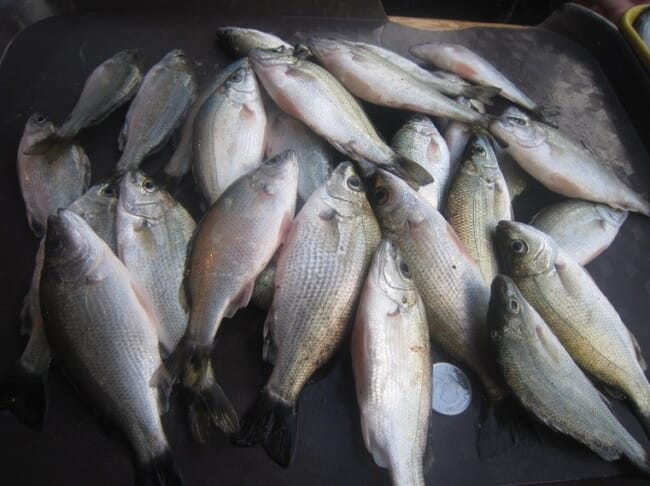Dr Frolan A Aya, from the Southeast Asian Fisheries Development Center (SEAFDEC), has devised and patented a new means to produce silver therapon (Leiopotherapon plumbeus).

© Dr FA Aya
“Silver therapon, locally known as ayungin, is regarded as one of the most valuable edible native freshwater species because of its tasty flesh. Despite the declining trend in wild stocks of silver therapon, demand for this food fish species remains high. It is sold from Php 200 to Php 800 per kilo when dried and around Php 500 per kilo when fresh depending on the season and catch,” said Dr Aya in a SEAFDEC press release.
Information from the Philippine Statistics Authority reveals that ayungin catch in the country has declined from 4,765 tonnes in 2002 to only 1,408 tonnes in 2018. Dr Aya plans to look into cultivating market-sized ayugin as well as using it as part of a plan to stock fry in Laguna de Bay to increase the wild population.
Speaking to The Fish Site, Jonah van Beijnen, who has been actively engaged in aquaculture in the Philippines, welcomed the development.
"The Philippines is highly dependent on aquaculture, especially with its overfished fish stocks, this dependency is likely to increase. Developing native resources for aquaculture will be of great benefit as these are better adapted to local climates and are often more resistant to local pathogens. Producing more native fish will provide a much needed boost to the aquaculture industry in the Philippines and create more employment opportunities," he explained.
SEAFDEC reports that Dr Aya now plans to refine the technology used for seed production and rearing of ayungin before demonstrating it more widely and also plans to pen a manual on the biology and hatchery rearing of the species.



